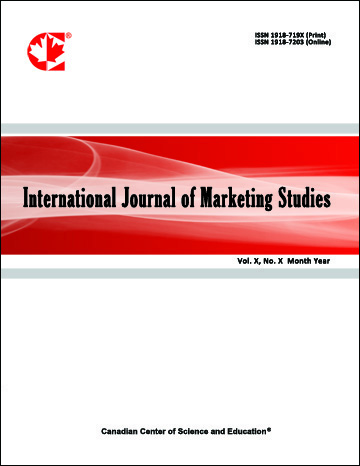Comparative Advertising: Proposed Guidelines for Middle Marketers
- Bassant Eyada
- Asli Cazorla Milla
Abstract
This article presents a review of comparative advertising from a theoretical perspective and uses a combination of literature review and content analysis as a research methodology. The main objective of the article is to propose a legislative framework for marketers in the Middle East for using comparative advertising. Advertising plays a significant role in promoting and marketing products and brands. Comparative advertising affects consumer behaviour, decision making and consumerism following the ethical standards of advertising which control the form of competition between products which affects the brand image and the relation between consumers and the products. While competition between brands becomes hostile in some cases, the purpose of competitive or comparative advertising is to compare the entity of a product to the entity of its competitor on the basis of one or more product characteristics, as part of an advertising campaign. Known to have two different types: direct and indirect, where the name of the competitor is specifically mentioned, and superiority is established over them within the direct form, as for the indirect the product places superiority over its competitors without explicitly mentioning the name, which is widely seen in the Middle East advertising campaigns. This research aims to study the ethical standards of comparative advertising, implications of direct comparative advertising on consumer behaviour through content analysis of comparative ads to set guidelines for using other product’s name or trademark in advertising within the Middle East. The lack of availability of the empirical data on comparative advertising in the Middle Easts presents both a challenge and an opportunity for academicians. The paper concludes with the notion that comparative advertising is an effective way to attract consumers, and it is recommended to be used in the Middle East with the proposed guidelines.
- Full Text:
 PDF
PDF
- DOI:10.5539/ijms.v12n2p23
Journal Metrics
Google-based Impact Factor (2021): 1.34
h-index (July 2022): 70
i10-index (July 2022): 373
Index
- Academic Journals Database
- CNKI Scholar
- EconBiz
- Electronic Journals Library
- Excellence in Research for Australia (ERA)
- GETIT@YALE (Yale University Library)
- Harvard Library
- IBZ Online
- Infotrieve
- JournalTOCs
- LOCKSS
- MIAR
- PKP Open Archives Harvester
- RePEc
- ResearchGate
- ROAD
- Scilit
- SHERPA/RoMEO
- Stanford Libraries
- UCR Library
Contact
- Alyssa SunEditorial Assistant
- ijms@ccsenet.org
